- Funs Jacobs
- Posts
- The world’s most ambitious AI play is already live
The world’s most ambitious AI play is already live
One empire. Five companies. A single goal: control the next intelligence.
The AI Empire you might be missing
Today we are going to talk about Elon Musk.. but before you now unsubscribe, I mean more about his companies though so no worries 😉. But yes, let’s start with the man himself. Elon Musk has probably become one of the (if not THE) most controversial figure on our global stage. He is worshipped by many and might be hated by even more at the moment. He is a fascinating character, that is for sure.
Personally, I read his original biography in 2016 or so (titled: “Elon Musk: Tesla, SpaceX, and the Quest for a Fantastic Future” by Ashlee Vance). The man has had a remarkable life that is for sure, from an early age. Then I also read the second biography, much more recent (including the Twitter drama) called “Elon Musk” by Walter Isaacson. Absolutely recommend reading it to get a bit of an understanding of this genius, but very flawed, mind.
My jaw dropped multiple times reading it. Fascinated by his work ethic, his dedication, his insane focus and the results that come from that. On the other hand also because of his many flaws and wild behavior. After reading the book I got even more respect for what he has built and he is not slowing down. But, as we have all seen more and more, the line between absolute genius and absolute madmen is very, very thin. I do believe you have to be at least a little (or alot) crazy if you want to do what people like Musk achieve. That goes for many besides him, including Steve Jobs, Jeff Bezos, Mark Zuckerberg and more.
I am not writing this article to discuss Elon Musks’ current state outside of his “day job” or his political stances. What I do want to discuss in this newsletter, is how he is slowly but surely building a mega AI empire by connecting many of his billion dollar companies. All of them, now seem to lead to one goal: super intelligence. This goes way beyond his “Grok” AI model and something a lot of people seem to be missing. So let’s zoom out and look at the big picture together.
Elon Musk’s Complicated Relationship with AI
Long before Grok entered the scene, Elon Musk was one of the most vocal voices warning about artificial intelligence. At the MIT AeroAstro Centennial Symposium in October 2014, he famously warned that AI could become humanity’s “biggest existential threat”, adding that “with artificial intelligence we are summoning the demon” .
His concern didn’t stop at rhetoric. In January 2015, Musk joined figures like Stephen Hawking and dozens of AI researchers in signing an open letter calling for careful, safety-focused development of AI. The letter underscored AI’s potential benefitsand its “pitfalls” if misused .
By December 2015, Musk had moved from warning to action as he co-founded OpenAI alongside Sam Altman, Ilya Sutskever, Greg Brockman and others. The organization was launched as a nonprofit with a mission to ensure AGI is “safe and beneficial to humanity” . Musk and the founders believed that “if everyone has AI powers, then there’s not any one person or a small set of individuals who can have AI superpower” .
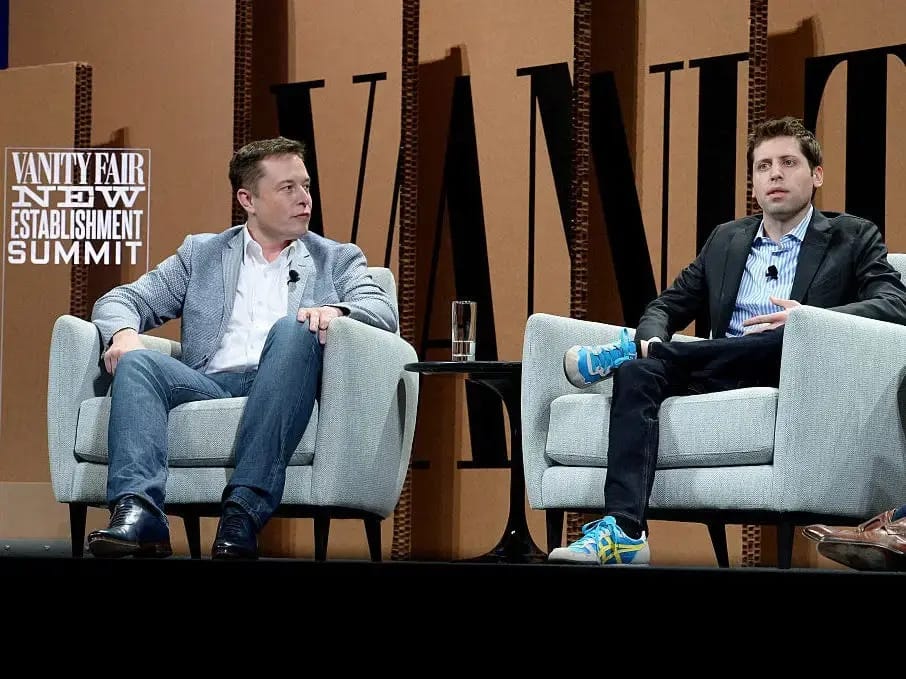
Elon Musk and Sam Altman (CEO & Co-Founder OpenAI) during the time of launch of OpenAI
However, Musk’s time at OpenAI was short-lived. He departed the board in 2018, citing growing differences in direction and concerns over the nonprofit’s trajectory .
Next steps
After stepping away from OpenAI’s board in 2018, Musk didn’t exit the AI stage—he just changed lanes.
Over time, OpenAI evolved from a non-profit to a “capped-profit” company, raising billions from Microsoft and integrating tightly with Azure. Musk, in contrast, became more vocal in his criticism. In 2023, he tweeted:
OpenAI was created as an open source (which is why I named it “Open” AI), non-profit company to serve as a counterweight to Google, but now it has become a closed source, maximum-profit company effectively controlled by Microsoft.
Not what I intended at all.
— Elon Musk (@elonmusk)
9:36 AM • Feb 17, 2023
In the meantime, Elon Musk had acquired Twitter (now X). The outrage was huge, people didn’t not understand why he would ever want to do this. (Side note: in the 2nd biography they go through the complete saga, it’s a movie 🤣).
When it happened, some Dutch media asked for a comment from someone at Media.Monks. Which ended up being me. My thought then: this is purely a data (and therefore AI) play, nothing else. Data and distribution.
Why Elon Musk Started xAI
It all became a bit more clear when in March 2023, Musk quietly incorporated a new company: xAI. A few months later, in July, it went public with an ambitious promise: “The goal of xAI is to understand the true nature of the universe.” It really felt like a counter act to all other major AI labs. It also felt that he could no longer ignore AI and that he rather build it himself (with all dangers still relevant) than have someone else build it. Trusting himself, above anyone else.

From the xAI website
In contrast to OpenAI and Google, which he sees as increasingly biased or politically aligned, Musk wants xAI to be neutral, even “rebellious” if necessary. He felt the major labs were not sufficiently transparent, were aligning with Big Tech, and were shaping AI narratives to fit corporate intereests. That’s why Grok, xAI’s first public model, is marketed as having “a bit of wit and a rebellious streak.”
Elon Musk doesn’t just build products, he assembles world class teams who all have the same drive and hunger that he has. This includes relentless working hours, insane dedication, all for the greater good.
When he publicly launched the company in July 2023, the first thing that stood out wasn’t the branding or the mission. It was the people.
The founding team included a dozen elite researchers pulled from the frontlines of AI development:
• Igor Babuschkin (DeepMind, OpenAI)
• Tony Wu (Google Brain)
• Kyle Kosic (OpenAI)
• Christian Szegedy (co-author of Inception at Google Brain)
• Toby Pohlen (DeepMind)
• Zihang Dai (Meta, Google)
• Others with ties to Tesla’s Autopilot and robotics teams
Many of these researchers had worked on large-scale model training, reasoning systems, and transformer architectures, exactly the kind of talent you’d need to build a foundation model from scratch.
It was clear that Musk did not enter the arena to just build a nice chatbot inside X (Twitter).
Why Musk Might Get to AGI First
Here’s the part most people miss.They see Grok and think Musk is playing catch-up in the chatbot game. But that’s just the interface.
Zoom out, and you’ll see something far more ambitious: he’s quietly building the most integrated AI ecosystem in the world.
Because to build artificial general (or super) intelligence, and actually make it matter, you don’t just need a good model. You need infrastructure.
At its core, AI lives off three things:
1. Data – the raw material
2. Compute – the muscle
3. Energy – the fuel
And once it’s trained, AI needs one more thing to actually reshape the world:
4. Distribution – the reach
Musk is going hard on all four.
So his companies aren’t just a set of companies, it’s a system. Each part reinforces the others. And if he pulls it off, he won’t just build an AI. He’ll own the stack it runs on, the platform it lives on, and the channels it speaks through.
Let’s walk through that empire, one layer at a time.

The power for the xAI empire
1: Data – The Raw Material
If intelligence is the engine, data is the fuel.
Every major AI breakthrough in the past five years, from GPT to Gemini, has relied on massive, diverse, high-quality data. Like OpenAI and Google, Musk’s teams also train on the open internet: books, articles, GitHub code, documentation, and more.
This is the baseline. But it’s not where Musk’s advantage lies. Musk owns two of the most unique data firehoses in the world.
Real-time cultural data from X
Musk didn’t just buy Twitter to “protect free speech.” He bought it because it’s a living feed of human thought. Every second, millions of people around the world post, argue, meme, joke, and react. It’s how humans process and respond to the world in real time.
Unlike most AI labs that rely on filtered Reddit, Wikipedia, and Common Crawl snapshots, xAI can tap into live, unfiltered conversation data. Not just what people said, but how they said it, when they said it, and what happened next.
It’s messy. It’s noisy. But it’s also deeply human.
Physical world data from Tesla
Then there’s Tesla.
While most labs train on static datasets, Musk owns the largest real-world sensory dataset on Earth. Tesla cars capture billions of miles of driving footage, sensor data, and edge cases across every imaginable environment.
This isn’t just useful for self-driving, it’s incredibly valuable for building AI models that need to perceive, predict, and act in the physical world.
A 2023 estimate by ARK Invest suggests that Tesla vehicles log over 5 million miles per day with FSD (full self-driving) engaged and more than 87 million miles per day when including all U.S. driving. That’s an enormous data stream few competitors can match.
Tesla’s cameras, radars, and neural nets make it a kind of AI earth scanner, mapping how the world moves and reacts in real time.
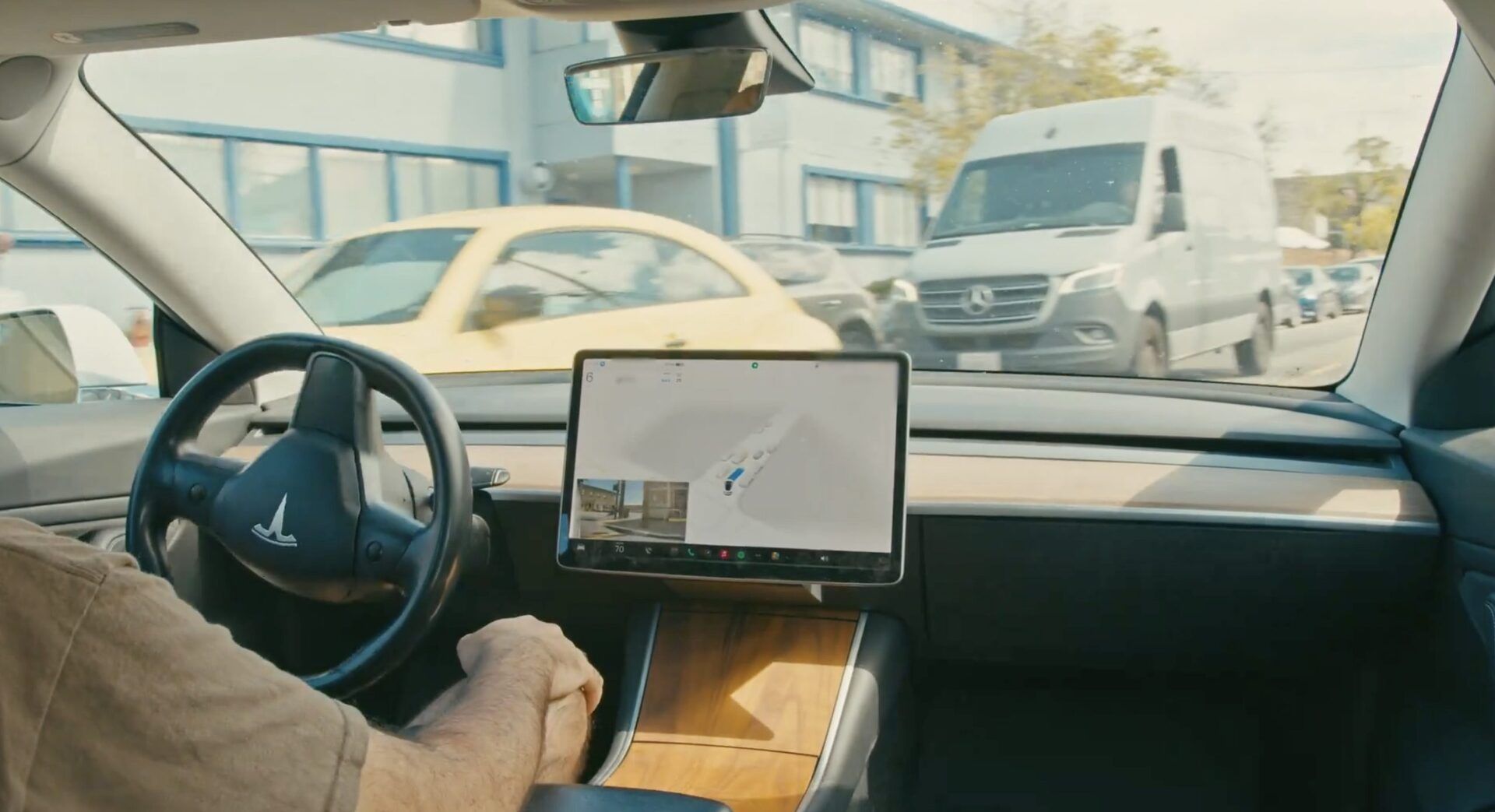
Tesla vehicles log over 5 million miles per day with FSD (full self-driving) engaged and more than 87 million miles per day when including all U.S. driving.
2: Compute – The Muscle of Intelligence
Let’s go back to basics.
In order to train advanced AI models, you need massive amounts of compute. Compute means high-performance processing power. And that power comes from chips.
The best chips in the world for this job right now? → Nvidia H100s.
Each H100 can perform trillions of operations per second and costs up to $30,000 apiece. They’re the beating heart of modern AI labs.
Enter: Colossus 1
In 2024, xAI began building what they internally called Colossus 1. A dedicated supercomputer cluster composed of 100,000 H100 chips.

A bespoke megafactory in Memphis, Tennessee.
To put that in perspective:
• OpenAI reportedly used ~10,000 A100 GPUs to train GPT-4
• xAI’s Colossus 1 is 10x larger, and built on next-gen chips
• It was constructed in under 8 months, a speed unheard of in the AI industry. It would normally take about 3 years to do so.
A bespoke megafactory in Memphis, Tennessee, designed to scale, cool, and power this kind of compute like a physical product line.
As heard on a podcast: “What Elon is doing is industrializing compute—turning GPU clusters into an assembly line.”
The result is that Grok4 is one of the top, if not leading, AI models out there and they got there in just two years time. Impressive.
And they are not done..
Coming Next: Colossus 2. According to recent investor briefings, xAI and Tesla are now planning Colossus 2, a follow-up cluster that will house up to 500,000 H100 (or equivalent) chips.
Those are mind blowing numbers.. and although Musk is known for extreme claims and predictions, even if he is off by 50% that would still be insane.
Why go this big?
Because the scaling laws of AI still hold: As you increase compute, data, and model size, capability keeps improving, often in predictable, exponential ways.
Every major leap in AI so far has followed this pattern. So if you want smarter, more general, more useful systems… you don’t just need new ideas. You need more compute. A lot more.

Nvidia CEO Jensen Huang calling Elon Musk superhuman for what he and his team have done with Colossus 1.
3: Energy – The Fuel (and the Missing Link)
All this AI compute needs one thing above all: power. And a lot of it.
Training a model at the scale of GPT-4 burns through millions of kilowatt-hours. xAI’s Colossus clusters? Even more. This is one of the biggest bottlenecks in the AI race and one most labs don’t control. But Musk might.
Through Tesla Energy, he’s built one of the world’s most advanced battery and storage operations:
• Megapacks power entire grids
• Powerwalls support homes
• Tesla’s in-house battery innovation gives it end-to-end control
That said: today, these energy systems aren’t directly powering xAI’s clusters. Yet.But the infrastructure exists. And Musk has always played the long game.
If he connects the dots, linking Tesla Energy to AI compute centers, he won’t just own the intelligence. He’ll own the electricity that makes it possible.
It’s the thinnest link in the empire right now. But it’s sitting in his portfolio, waiting to be activated.
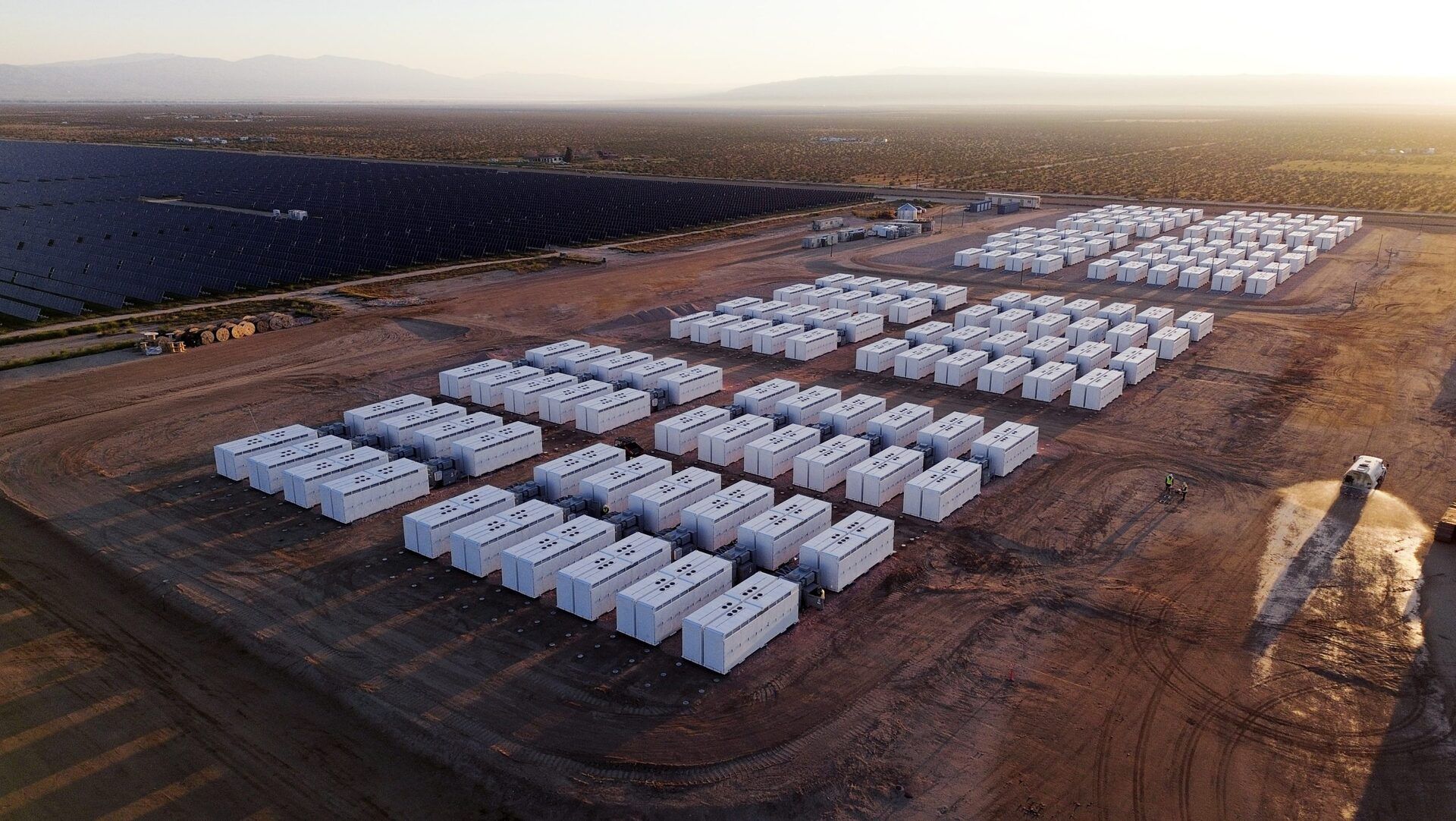
Tesla Megapack System
4: Distribution – The Reach
Once you’ve trained the AI, you need a way to get it into the world. Musk has the channels for that as well.
Tesla Cars: Over 5 million rolling computers already on the road. Every one of them can run AI locally, from driving assistance to in-car copilots. A software update is all it takes.
Optimus Robots: Still early, but real. Optimus is being trained using the same AI stack as Tesla Autopilot. If it works, Musk won’t just build AI brains—he’ll give them bodies.
X (formerly Twitter): Where Grok lives and learns. Integrated directly into the feed, Grok turns X into a global testing lab for real-time human interaction and AI feedback.
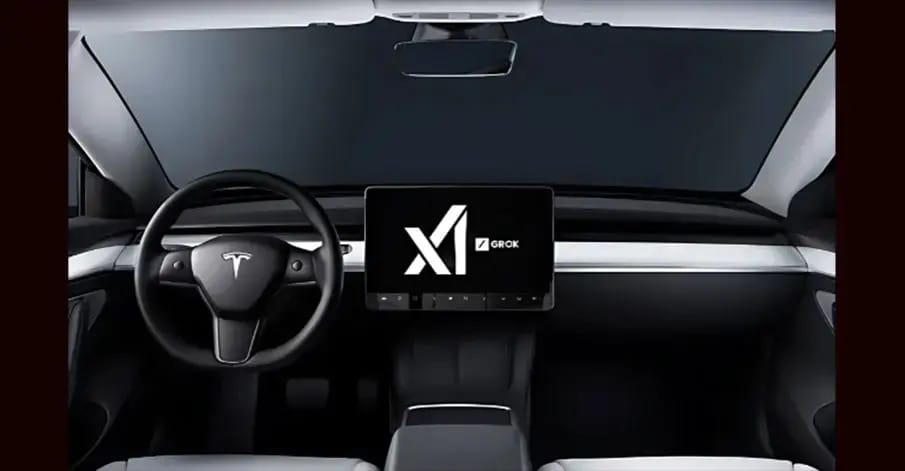
Tesla already announced Grok integration in all cars coming soon.
Neuralink – If You Can’t Beat the AI…
There’s one big problem with AI progress: Humans can’t keep up.
One of our limiting factors is bandwidth, the speed at which we can communicate with machines or each other. Today, most of us are typing with thumbs on glass. Meanwhile, AI models process gigabits per second.
Elon Musk sees this as a civilizational risk. If AI becomes superintelligent, humans risk becoming spectators instead of stewards. Neuralink is his answer.
By creating a direct brain-machine interface, Neuralink could one day:
• Boost human cognition
• Enable telepathic communication
• Integrate real-time AI assistants into our thoughts
• Let people control humanoid robots with their minds
In the near-term, it’s helping paralyzed patients regain control. In the long-term, it’s a human-AI copilot system, designed to keep us in the loop, not left behind.
If you can’t beat them, join them..
At the time of writing Neuralink has successfully implemented 9 devices in 9 different patients.
SpaceX – The Escape Hatch
There’s one more card in Musk’s deck: SpaceX.
At first glance, it has little to do with AI. But zoom out, and it’s Musk’s ultimate insurance policy.
His core belief? Civilization needs to be multi-planetary. Because AI, pandemics, climate disasters, any could pose an extinction-level threat.
SpaceX is how you hedge that future as Mars colonization = backup node for humanity.. It’s not a product strategy. It’s a survival strategy..
Concluding thoughts
Now on one hand you might think, holy shit this is insanely impressive.. and it is! On the other hand, this sounds incredibly scary. All of the above is centered around one individual.
It sometimes feels like Musk could be the most powerful man on the planet and yes his recent behavior has been very extreme, to say the least. He keeps claiming that he is doing all of this for the benefit of humanity. Max truth seeking without any influence of large corporations and politics, a backup plan for humanity with SpaceX, Neuralink to help so many disabled people back to a regular life.. but oh man hahah let’s not think too long about “what if he turns actual evil”? 😅
I will leave that for everyone to decide. Besides all the madness, I do think people like Musk are incredibly inspiring. He proves over and over again that anything is possible if you put your mind to it. The difference between him and us normal people is just that he can do it with 5-6 companies at the same time 🤣 .
PS... If you’re enjoying my articles, will you take 6 seconds and refer this to a friend? It goes a long way in helping me grow the newsletter (and help more people understand our current technology shift). Much appreciated!
PS 2... and if you are really loving it and want to buy me some coffee to support. Feel free! 😉
Thank you for reading and until next time!

Who am I and why you should be here:
Over the years, I’ve navigated industries like advertising, music, sports, and gaming, always chasing what’s next and figuring out how to make it work for brands, businesses, and myself. From strategizing for global companies to experimenting with the latest tech, I’ve been on a constant journey of learning and sharing.
This newsletter is where I’ll bring all of that together—my raw thoughts, ideas, and emotions about AI, blockchain, gaming, Gen Z & Alpha, and life in general. No perfection, just me being as real as it gets.
Every week (or whenever inspiration hits), I’ll share what’s on my mind: whether it’s deep dives into tech, rants about the state of the world, or random experiments that I got myself into. The goal? To keep it valuable, human, and worth your time.

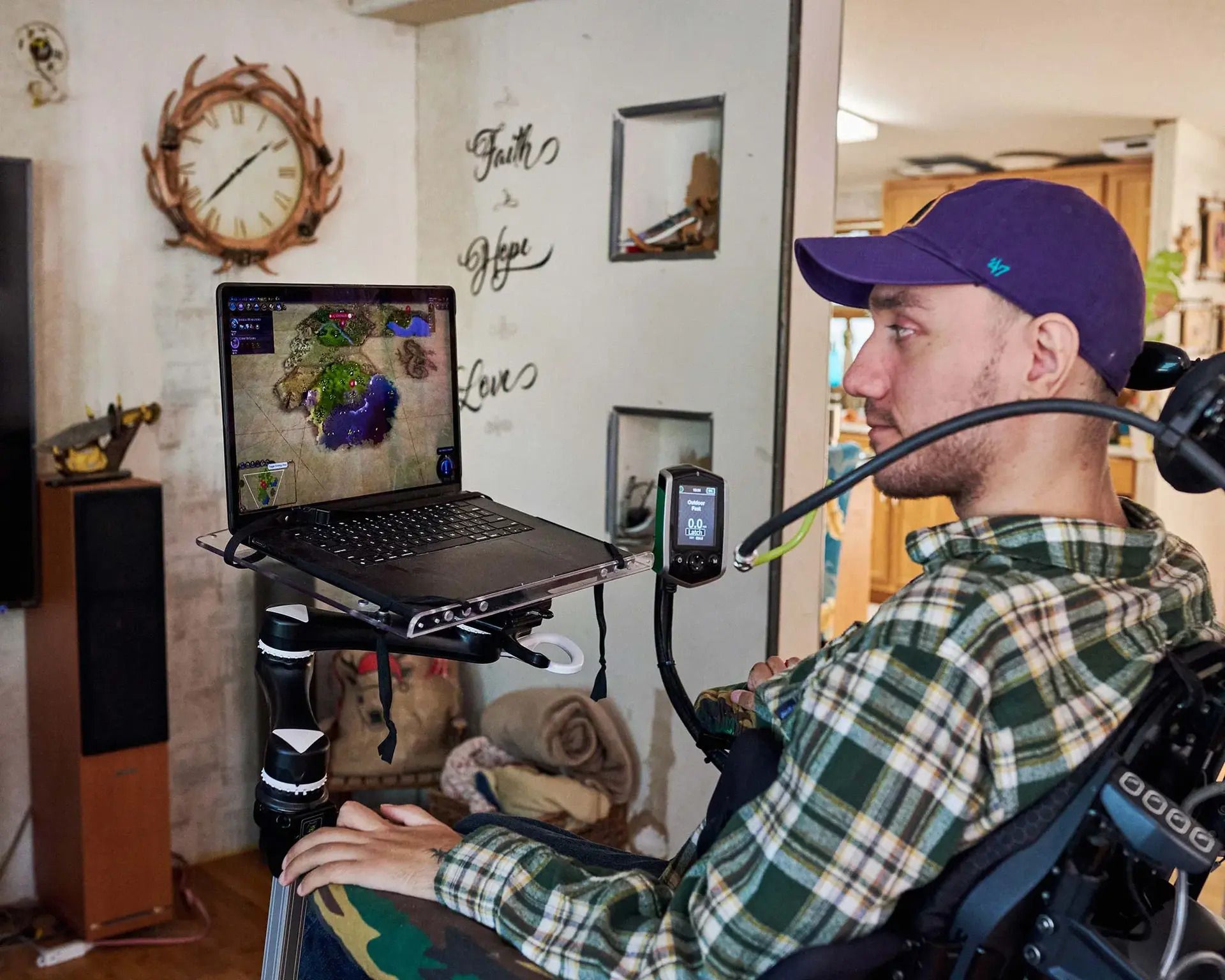

Reply